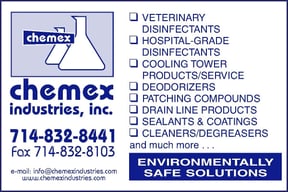Hantavirus (HCPS) is called hantavirus pulmonary syndrome, and it's spread by infected rodents, especially the common deer mouse. It was first discovered in the United States in 1993 near the Four Corners region – where Utah, Colorado, New Mexico and Arizona meet. At the time, no one knew what caused the disease, in which the lungs fill with fluid, essentially drowning its victims.
Humans can contract the often fatal disease by inhaling airborne particles of dried feces or urine from an infected rodent. Gross? Yes, but exposure isn't uncommon when you go camping or if you sleep in a building that has been empty for awhile and is near nature. About one in seven deer mice – in Orange County, California and elsewhere – carries hantavirus.
The only way to catch the disease is through contact with an infected animal, almost always deer mice. Rodents like gardens and, when possible, high elevations. But they can also be found in desert areas. The virus is in the saliva, feces and urine of infected mice and is spread to humans who inhale airborne dust and aerosol particles.
Early symptoms include "fatigue, fever and muscle aches, especially in the large muscle groups – thighs, hips, back and sometimes shoulders," according to the CDC.
"There may also be headaches, dizziness, chills and abdominal problems, such as nausea, vomiting, diarrhea and abdominal pain," according to the agency.
In as little as four to 10 days, the symptoms can become more severe.
Patients can suffer shortness of breath and coughing as the lungs fill with fluid. The CDC website quotes one survivor as saying that it felt as if he had a "tight band around my chest and a pillow over my face."
The outbreak at Yosemite National Park in 2012, brought the issue to national attention. - There have since been cases reported in Orange County, California. - The deadly virus has now entered private homes, with 51 cases reported in California.
This problem will only intensify as rodents enter homes to seek shelter from cold weather and in search for food.
Infection can occur when humans come in contact with infected droppings or saliva. Areas of most concern are cupboards, counter tops, the garage, storage areas and attics. The most common form of transmission is breathing contaminated air or dust. (The flow from air conditioning can also cause the virus to become airborne)
If you see signs of rodent droppings it would be best to contact an exterminator.
Do not attemp to sweep up the droppings, as the stirring up of infected materials will become airborne. If you see signs of rodent activity, spray the area with a solution of "RX-44 ACE" or "RX-75" (Hospital Grade Disinfectants, with specific Hantavirus kill claims). Wear a dust mask and other protective equipment, including gloves and goggles. After 10 minutes of contact time, sprinkel specific absorbent onto the treated solution and then remove carefully with broom and dust pan.
Stop Hantavirus Outbreak

